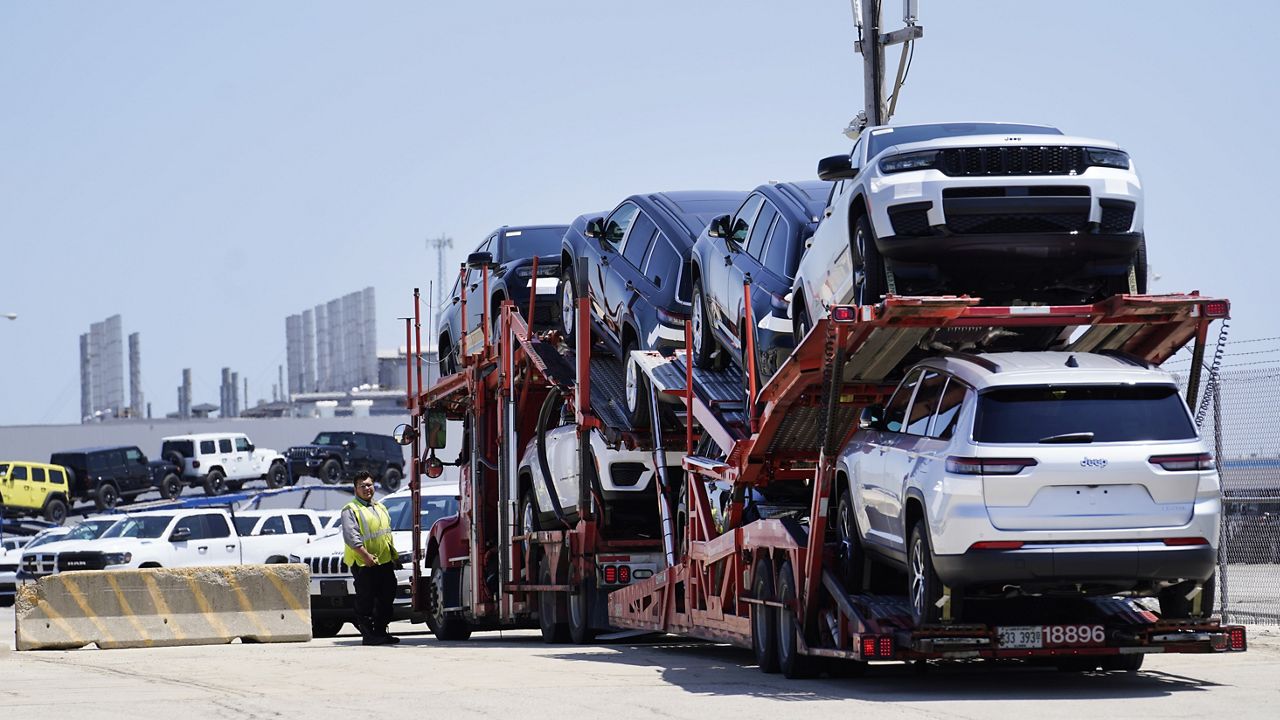The U.S. economy accelerated unexpectedly to a 2.4% annual growth rate from April through June, showing continued resilience in the face of steadily higher interest rates resulting from the Federal Reserve's 16-month-long fight against inflation.
What You Need To Know
- The U.S. economy accelerated unexpectedly to a 2.4% annual growth rate from April through June, showing continued resilience in the face of steadily higher interest rates resulting from the Federal Reserve's 16-month-long fight against inflation
- The gross domestic product — the economy's total output of goods and services — picked up from the 2% growth rate in the January-March quarter
- Consumer spending slowed to a 1.6% annual rate, from 4.2% in the first quarter of the year, a likely consequence of higher borrowing costs
- But business investment and state and local government spending grew faster
Thursday's estimate from the Commerce Department indicated that the gross domestic product — the economy's total output of goods and services — picked up from the 2% growth rate in the January-March quarter.
"The economy is growing and we’re lowering costs for families," President Joe Biden cheered in a statement. "That’s Bidenomics at work."
"Private business investment was strong and investment in manufacturing facilities contributed more to growth than it has in 40 years, consistent with my Investing in America agenda," the president continued. "The economy’s continued growth builds on what was already the strongest pandemic recovery and lowest inflation of any G-7 country. This progress wasn’t inevitable or accidental—it is Bidenomics in action, growing the economy from the middle out and bottom up, not the top down."
The president went on to say that "hard-working Americans are seeing the results" of his economic agenda.
"Our unemployment rate remains near record lows, inflation has fallen by two thirds, real wages are higher than they were before the pandemic, and we’ve seen more than half a trillion dollars in private sector investment commitments in clean energy and manufacturing," Biden said. "My economic plan is working—and we’re just getting started."
Consumer spending slowed to a 1.6% annual rate, from 4.2% in the first quarter of the year, a likely consequence of higher borrowing costs. But business investment and state and local government spending grew faster.
In fighting inflation, which last year hit a four-decade high, the Fed has raised its benchmark rate 11 times since March 2022, most recently on Wednesday. The resulting higher costs for a broad range of loans — from mortgages and credit cards to auto loans and business borrowing — have taken a toll on growth.
Still, they have yet to tip the United States into a widely forecast recession. Optimism has been growing that a recession isn't coming after all, that the Fed can engineer a so-called "soft-landing" — slowing the economy enough to bring inflation down to its 2% annual target without wrecking an expansion of surprising durability.
This week, the International Monetary Fund upgraded its forecast for U.S. economic growth for all of 2023 to 1.8%. Though that would be down from 2.1% growth for 2022, it marked an increase from the 1.6% growth that the IMF had predicted for 2023 back in April.
At a news conference Wednesday after the Fed announced its latest quarter-point rate hike, Chair Jerome Powell revealed that the central bank's staff economists no longer foresee a recession in the United States. In April, the minutes of the central bank's March meeting had revealed that the Fed's staff economists envisioned a "mild" recession later this year.
In his remarks, Powell noted that the economy has proved resilient despite the Fed's rapid rate hikes. And he said he still thinks a soft landing remains possible.
By any measure, the American job market has shown itself to be remarkably strong. At 3.6% in June, the unemployment rate hovers just above a five-decade low. A surge in retirements after COVID-19 hit in early 2020 has contributed to a shortage of workers across the country, forcing many companies to raise wages to attract or keep staffers.
Higher pay and job security are giving Americans the confidence and financial wherewithal to keep shopping. Indeed, consumer spending, which drives about 70% of economic activity, rose at a 4.2% annual rate from January through March, the fastest quarterly pace in nearly two years. Americans have kept spending — crowding airplanes, traveling overseas and flocking to concerts and movie theaters.
And the Conference Board, a business research group, reported Tuesday that Americans this month are in their sunniest mood in two years, based on the board's reading of consumer confidence.
Indeed, many consumers are finally enjoying some relief from spiking prices: Year-over-year inflation, which peaked at 9.1% in June 2022, has eased consistently ever since. Inflation-adjusted hourly pay rose 1.4% in June from a year earlier, the sharpest such gain since early 2021.
Still, the risk remains that the weight of ever-higher interest rates will eventually slow borrowing so much — for homes, cars, renovations, business expansions and other costly expenses — as to pull the economy into recession.
Among the economy's weakest links has been the housing market. In June, sales of previously occupied homes sank to their slowest pace since January. The problem is that a near-historic low number of homes for sale and higher mortgage rates kept many would-be homebuyers on the sidelines. Sales fell 19% compared with June 2022 and were down 23% through the first half of the year.



